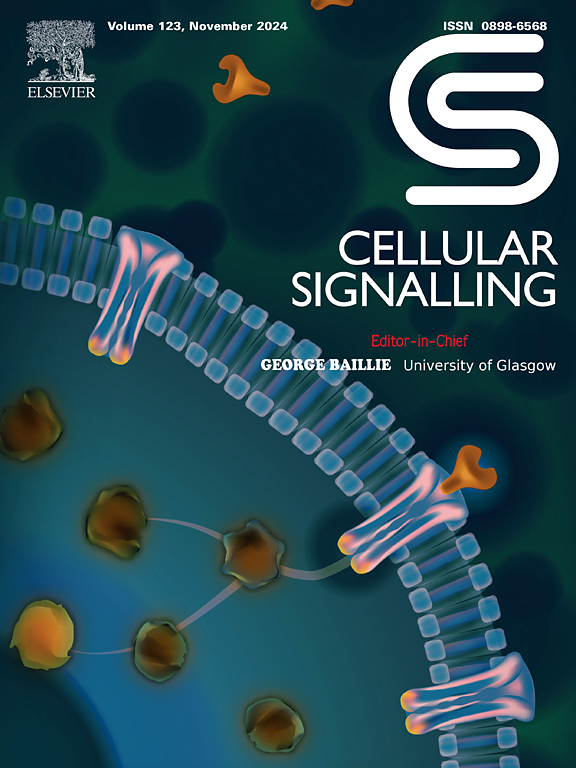TRIM29通过稳定FAM83H调节结直肠癌角蛋白网络,增强肝脏定植,促进肝转移。
IF 4.4
2区 生物学
Q2 CELL BIOLOGY
引用次数: 0
摘要
肝转移是结直肠癌(CRC)常见且严重的事件,肝转移患者通常预后差,复发率高,治疗反应性低。然而,CRC肝转移的确切分子机制尚不清楚。在这项研究中,通过综合多组学方法,我们在这里确定了具有高三方基序蛋白29 (TRIM29)表达的CRC细胞是肝转移的关键亚群。组学测序途径分析结合体外功能分析显示,高表达TRIM29的CRC细胞具有增强的细胞粘附、增殖和肝转移能力。机制上,TRIM29与FAM83H相互作用,通过降低FAM83H的泛素化和降解来稳定FAM83H,从而使细胞角蛋白重新分布,激活NF-κB通路,上调PLXNB2表达,增强细胞粘附和增殖,促进肝定植,驱动结直肠癌肝转移。有趣的是,TRIM29上调PLXNB2的表达,PLXNB2可以结合肝细胞特异性配体SEMA4G。重要的是,靶向trim29 - fam83h引发的角蛋白重分布和PLXNB2升高有效地消除了结直肠癌的肝转移。我们的研究结果表明TRIM29是结直肠癌肝转移的核心驱动因素,并强调其作为降低患者肝转移风险的治疗靶点的潜力。本文章由计算机程序翻译,如有差异,请以英文原文为准。
TRIM29 promotes liver metastasis via enhancing hepatic colonization by stabilizing FAM83H to regulate keratin network in colorectal cancer
Liver metastasis is a frequent and severe event of colorectal cancer (CRC), and patients with liver metastases typically exhibit poor prognosis, high recurrence rates and low responsiveness to treatment. However, the precise molecular mechanisms underlying the liver metastasis in CRC remain poorly understood. In this study, through a comprehensive multi-omics approach, we here identify CRC cells with high tripartite motif-containing protein 29 (TRIM29) expression as the critical subset responsible for liver metastasis. Omics-sequencing pathway analyses combined with in vitro functional assays revealed that CRC cells expressing high TRIM29 expression displayed enhanced cell adhesion, proliferation and liver metastasis capabilities. Mechanistically, TRIM29 interacts with FAM83H and stabilizes it by reducing its ubiquitination and degradation, thereby redistributing cellular keratins, which activates the NF-κB pathway and upregulates PLXNB2 expression to enhance cell adhesion and proliferation to promote hepatic colonization and drive CRC liver metastasis. Interestingly, TRIM29 upregulates the expression of PLXNB2 that can bind to the hepatocyte-specific ligand SEMA4G. Importantly, targeting TRIM29-FAM83H-elicited keratin redistribution and PLXNB2 elevation effectively abrogated CRC liver metastasis. Our findings position TRIM29 as a central driver of liver metastasis in CRC and highlight its potential as a therapeutic target for reducing the risk of liver metastasis in patients.
求助全文
通过发布文献求助,成功后即可免费获取论文全文。
去求助
来源期刊

Cellular signalling
生物-细胞生物学
CiteScore
8.40
自引率
0.00%
发文量
250
审稿时长
27 days
期刊介绍:
Cellular Signalling publishes original research describing fundamental and clinical findings on the mechanisms, actions and structural components of cellular signalling systems in vitro and in vivo.
Cellular Signalling aims at full length research papers defining signalling systems ranging from microorganisms to cells, tissues and higher organisms.
 求助内容:
求助内容: 应助结果提醒方式:
应助结果提醒方式:


